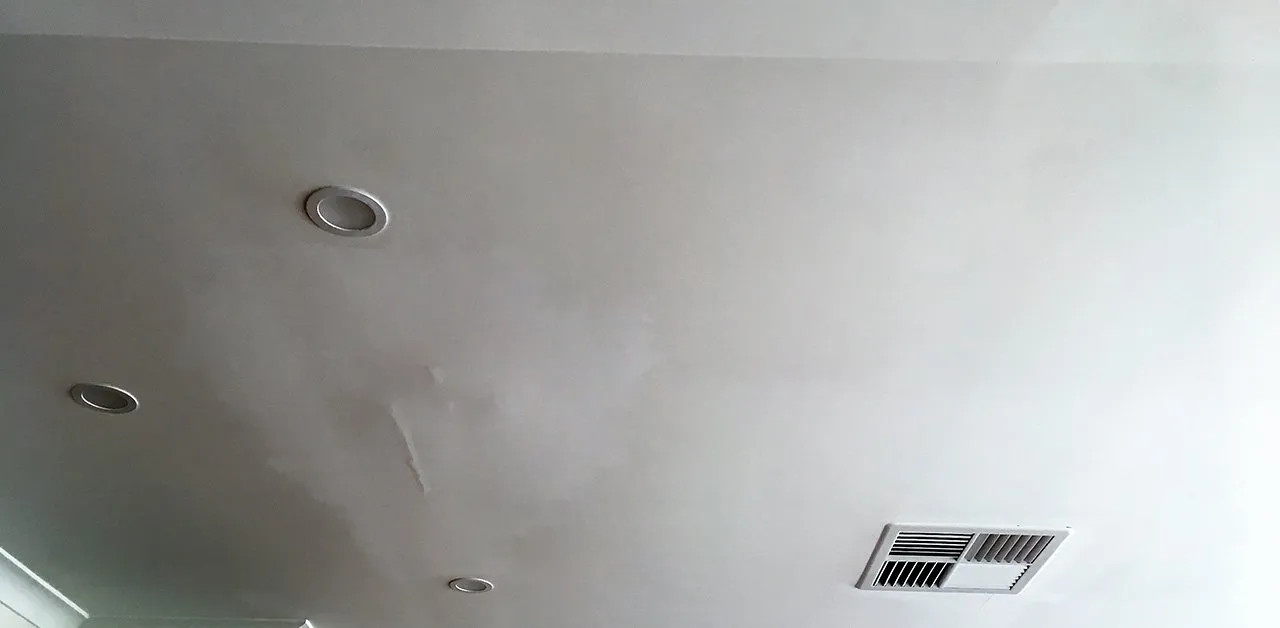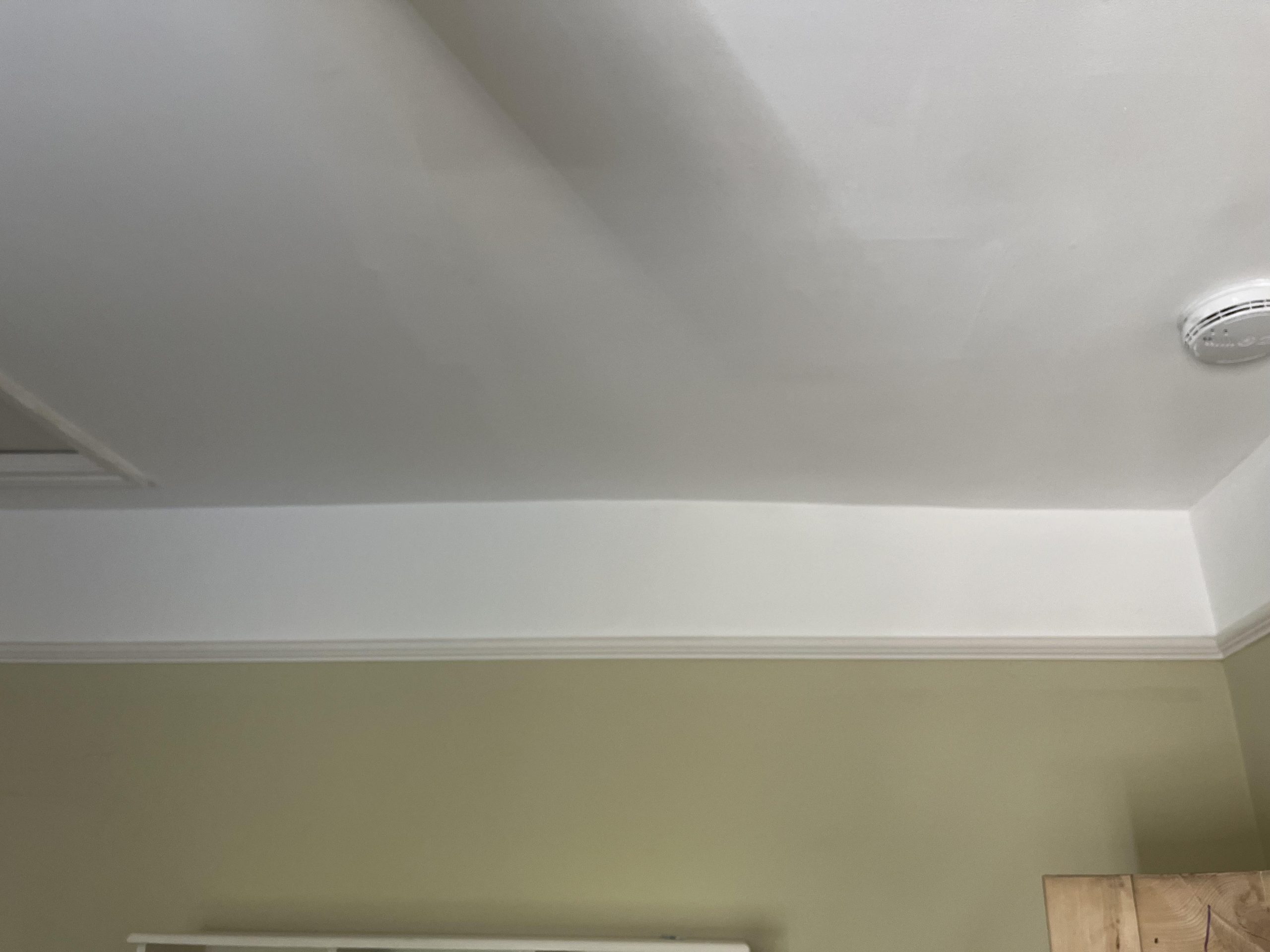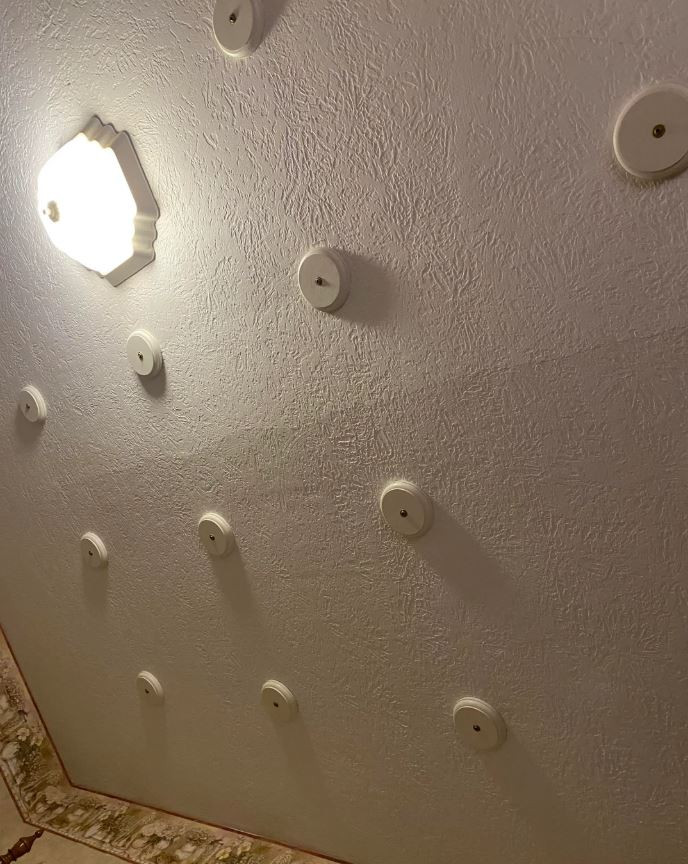The Hidden Story Behind Wooden Discs on Ceilings
Have you ever found yourself lying in a room, your gaze drifting toward the ceiling, and your eyes landing on those peculiar circular wooden discs? Initially, you might dismiss them as a quirky design choice or simply an artifact of outdated decor. However, the truth behind these seemingly odd features is far more intriguing and practical than mere aesthetics. These are not mere embellishments; rather, they represent a time-tested solution to a common problem in older buildings: the notorious issue of sagging plaster ceilings. This article delves deeper into the history, function, and cultural significance of these wooden discs, revealing their multifaceted role in architectural preservation.
A Brief History of Plaster Ceilings
Before the era of drywall, which revolutionized interior wall and ceiling construction, the typical ceiling in homes was crafted using a method known as lath and plaster. This technique involved attaching thin wooden strips, referred to as lath, to ceiling joists, followed by a thick application of wet plaster. As the plaster dried, it would fill the gaps between the lath, creating a solid, durable surface. However, with the passage of time—often many decades—this once-sturdy ceiling began to show signs of age. The plaster would dry out, develop cracks, and eventually start to separate from the lath. In some cases, the results could be catastrophic, leading to sagging or even complete collapse of plaster sections. The widespread use of plaster ceilings dates back to the 19th century, particularly in homes built during the Victorian era. These ceilings were not merely functional but also served as a canvas for ornate designs, from intricate cornices to elaborate medallions. As time progressed, the labor-intensive process of creating plaster ceilings became less common, giving rise to drywall as a quicker, cheaper alternative. Nonetheless, many historic homes still retain their original plaster ceilings, making the presence of wooden discs increasingly relevant as a restoration technique.
The Ingenious Solution: Wooden Discs
Once the plaster begins to separate from the lath, traditional fixes like screwing it back into place become ineffective; the material is too fragile and risks crumbling under pressure. Thus emerged the ingenious use of wooden discs, typically the size of a silver dollar. These discs are embedded into the lath and serve a critical purpose: they distribute pressure evenly across the surface of the plaster, allowing it to be gently pulled back into position without the risk of further cracking. This method can be likened to the use of a wide paddle rather than a sharp nail; it minimizes concentrated stress and promotes stability. Interestingly, these wooden discs can often go unnoticed, blending seamlessly into the ceiling, primarily if painted over. Their installation often occurs during renovations or repairs, and their very presence can be seen as a badge of honor for the homeowner who chooses to preserve the original structure. While the discs may not be visible to the casual observer, their function is undeniably crucial in sustaining the integrity of older plaster ceilings.

Metal Washers vs. Wooden Discs: Aesthetic Considerations
While it’s not uncommon today to find metal plaster washers used for similar purposes in modern renovations, those wooden discs hold a special place in the hearts of enthusiasts of vintage architecture. Metal solutions may do the job effectively, but they lack the charm and character that wooden discs provide. For homeowners aiming to maintain a rustic or vintage aesthetic, these wooden elements not only serve a functional purpose but also blend seamlessly with the original craftsmanship of the building. Moreover, the visual appeal of wooden discs can enhance the overall ambiance of a room. They can evoke a sense of nostalgia, transporting occupants back to a time when craftsmanship was celebrated. In a world that often favors minimalism and sleek designs, these wooden discs serve as a reminder of the artistry involved in traditional building methods, making them an invaluable part of architectural heritage.
A Personal Experience: Reviving a Bungalow’s Ceiling
Reflecting on my own experiences, I recall living in a charming yet precarious 1920s bungalow where the dining room ceiling sagged ominously, resembling a soft tortilla. Faced with the dilemma of a costly full ceiling renovation, I opted for a DIY approach. Armed with a drill and pre-cut wooden discs, I meticulously installed them in a grid pattern across the affected areas. Post-installation, a fresh coat of paint transformed the appearance of the ceiling, and the results were both functional and aesthetically pleasing. For years, I enjoyed a ceiling free from the menace of crumbling plaster, proving that sometimes innovation comes in the form of simple, hands-on solutions. This personal journey not only restored the integrity of my ceiling but also deepened my appreciation for craftsmanship. The experience underscored how DIY efforts, grounded in respect for traditional methods, can yield satisfying results. I learned that by utilizing wooden discs, I engaged in a practice that harkens back to a time when repair was favored over replacement, embodying a spirit of resourcefulness that is often overlooked in contemporary home improvement culture.
Why You Might Only See Discs in Certain Areas
If you happen to notice wooden discs in only one room of a building, it often indicates that particular space experienced more significant plaster issues than others. Factors such as plumbing leaks, high foot traffic, or even changes in temperature can lead to uneven settling and accelerated wear. Homeowners typically prioritize repairs based on urgency, which means that not every ceiling in the house will necessarily feature these discs. In commercial settings like hotels, the presence of wooden discs might signal management’s preference for cost-effective repairs over extensive renovations. Furthermore, the placement of these wooden discs can reveal a lot about the building’s history. For instance, if they are clustered in a kitchen, this could hint at previous water damage, while discs in a living room may point to challenges from heavy lighting fixtures or ceiling fans. Understanding the context of these placements can provide fascinating insights into the building’s past and the challenges faced by its inhabitants.

The Choice: To Cover or to Leave Visible?
When it comes to the aesthetic decision of whether to conceal or showcase these wooden discs, there is no definitive right or wrong answer. Some individuals appreciate the exposed discs, as they tell a story about the building’s history and the dedication of those who chose to repair rather than replace. Others may prefer to blend them into a smooth ceiling using joint compound and paint, aiming for a more polished finish. Ultimately, this choice reflects personal taste and the desired ambiance of the space. Personally, I find beauty in leaving them visible; it’s akin to appreciating the brush strokes in a painting, reminding us of the value of preserving the old and the imperfect. This decision often involves considerations of not just aesthetics but also functionality. Leaving the discs exposed can serve as a reminder of the necessary ongoing maintenance that older homes require, while concealing them may project a more modern appearance. In this sense, the choice encapsulates a broader debate about preservation versus modernization, allowing homeowners to express their values through their living spaces.
More Than a Repair: A Testament to Craftsmanship
In a modern world often characterized by a ‘replace it’ mentality, the existence of patched ceilings adorned with wooden discs serves as a refreshing reminder of a different philosophy. These humble discs signify a commitment to repair over replacement, ingenuity over convenience, and function over superficiality. They symbolize a resourcefulness that was once commonplace and an appreciation for the stories that old buildings hold. Moreover, these discs serve as a testament to the craftsmanship of a bygone era, showcasing the skills of artisans who valued durability and beauty. Each installation tells a story, representing not just a practical solution but a dedication to preserving the character of a space. In many ways, these small wooden circles are emblematic of the larger narrative surrounding the preservation of historical architecture in modern society.
Conclusion: A Legacy in Every Circle
So, the next time you gaze up at those curious wooden discs adorning a ceiling, remember that they are much more than just random artifacts. They are markers of age, resilience, and the collective choice to preserve rather than erase. Each wooden dot tells a story, a legacy of craftsmanship that deserves recognition. Ultimately, they are the punctuation marks that help hold the narrative of our architectural heritage together. In contemplating the future, we must consider how we will treat these architectural elements. Will we continue to honor the traditions of repair and restoration, or will we prioritize the convenience of modern methods? The answer lies not just in the structure of our homes but in the values we choose to uphold as stewards of history. The wooden discs on our ceilings are not merely practical solutions; they are a testament to our connection with the past, and each one carries with it the weight of history, inviting us to reflect on what we choose to preserve for future generations.

















